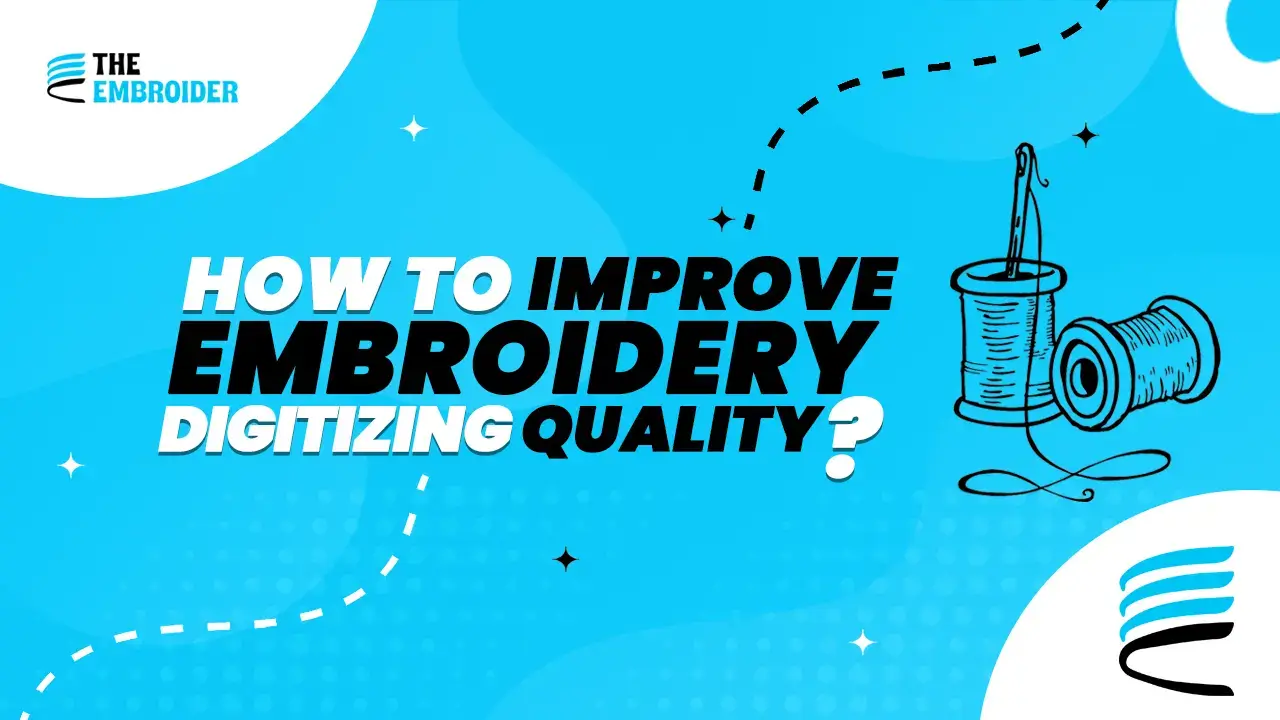Have you ever looked at a patch, jacket, or shirt and thought, “Wow, that’s sharp”? The difference usually starts long before the thread hits the fabric. It lies in embroidery digitizing, namely in how you prepare your artwork, plan your stitches, and use tools and skills to make designs come alive. When you aim to improve embroidery digitizing quality, it’s not enough for a design to just look good on the computer screen, it must translate beautifully in thread. Below are insights and habits I’ve picked up (and used myself) that ensure your embroidery lasts, feels sharp, and truly stands out.
Why Raster-to-Vector Conversion Should Be Your First Step
I’ve seen many folks try to embroider designs using low-res JPEGs or PNGs. They look okay until you size them up. That’s when blur and distortion creep in. What saves the day is raster-to-vector conversion. Turning the design into vector formats like AI, SVG, or EPS means every line, curve, and detail scales cleanly. No fuzz. No jagged edges. That’s how you protect sharpness before it even reaches the sewing machine.
Why Professional Embroidery Digitizing Services Are a Game Changer
Sure, you could try digitizing on your own, and some people do. But when you want consistency, efficiency, and fewer surprises, you’ll see why Professional Embroidery Digitizing Services are worth it.
- The pros understand how to lay out optimal stitch paths, dial in the right stitch density for each fabric, and trim out useless jump stitches that create mess. Those details are what separate “just okay” from truly polished results.
- They anticipate how different fabrics behave (denim, fleece, silk) and adjust underlay/backing accordingly.
- Their tools and experience help avoid issues like thread breaks, puckering, color mismatches, or unreadable small details.
- By working with experts, you often get proofs/test files first, so you catch off-design issues early.
Feeding Trends notes that professional digitizing leads to consistent stitch density, accurate alignment, and designs that don’t lose clarity over time.
Practical Ways to Improve Embroidery Digitizing Quality
Here are steps you can take (or ask your digitizer to do) to raise your design’s quality:
- Begin with High-Quality, Clean Artwork
Always aim for vector or clean, high-resolution images. If you have only a raster version, convert it properly via raster-to-vector conversion. Even small flaws now will get magnified in stitches. - Simplify Complex Details When Needed
Tiny fine lines or overly complex gradients often don’t translate well into thread. Keep text readable, borders smooth, and avoid extremely detailed elements in very small spaces. - Match Thread, Color, and Fabric
Choose thread colors that complement your artwork and fabric. Fabric texture or color can change how thread appears. Solid contrast helps designs pop. Also adapt stitch density according to fabric less dense stitch patterns on delicate or stretchy fabrics. - Use Proper Backing, Underlay & Stabilizers
Stretchy or stretchy knit fabrics need different underlays to hold designs firm. Heavier fabrics need stronger backing to support stitches. Good stabilizer and correct tension help avoid puckering and distortion. - Run Test Stich-outs & Refine Before Final Production
Do a sample run on a scrap or similar fabric. Check for color accuracy, distortion, loose threads, pull-throughs, puckering. Make adjustments, tweak stitch density, adjust underlay, or fine-tune the vector design if required.
Common Pitfalls to Avoid
Even skilled digitizers stumble sometimes. Here are mistakes I’ve seen (and avoided) in trying to improve embroidery digitizing quality so you won’t have to learn them the hard way:
- Using raster artwork without converting it: When you digitize straight from a JPG or PNG, those edges often turn jagged and details blur.
- Overcrowding the design: Too many stitches bunched together make the fabric pucker or distort. It’s like trying to pack too much into a small space.
- Ignoring how fabric behaves: What works beautifully on denim might fail miserably on jersey. Stretchy or spongy fabrics demand different stitch density, backing, and planning.
- Skipping the test stitch-out: Assumptions can cost time, materials, reputation.
Bringing It Together
Improving embroidery digitizing quality isn’t about one magic trick, it’s more like preparing a fine dish. Start with top-notch ingredients (crisp artwork, clean vector files). Apply skilled technique (stitch placement, underlay, density). Adapt to your “terrain” (fabric behavior, thread type, color contrast). Finally, taste and adjust meaning you test, tweak, and refine before final execution.
When you order custom patches or embroidery, always ask for vector artwork, review test stitch-outs, and work with digitizing pros. The result? Edge definition, texture clarity, and wearability that lasts beyond the first wash.
FAQ
Q1: How do I tell if artwork needs raster-to-vector conversion?
A1: Zoom in. If edges blur or pixels show when enlarged, or if you plan to use the design at different sizes (caps, shirts, bags), you need vector conversion.
Q2: Can I improve digitizing quality using just software filters or auto-tools?
A2: Auto tools help, but alone they’re usually not enough. A human touch (skilled digitizer) is required for adjusting stitch paths, managing fabric quirks, and avoiding errors.
Q3: What’s stitch density, and why is it so important?
A3: Stitch density is how closely stitches are placed. Too dense, and fabric puckers; too sparse, and design looks weak or gaps appear. Good digitizing balances density depending on the fabric and size of design.



